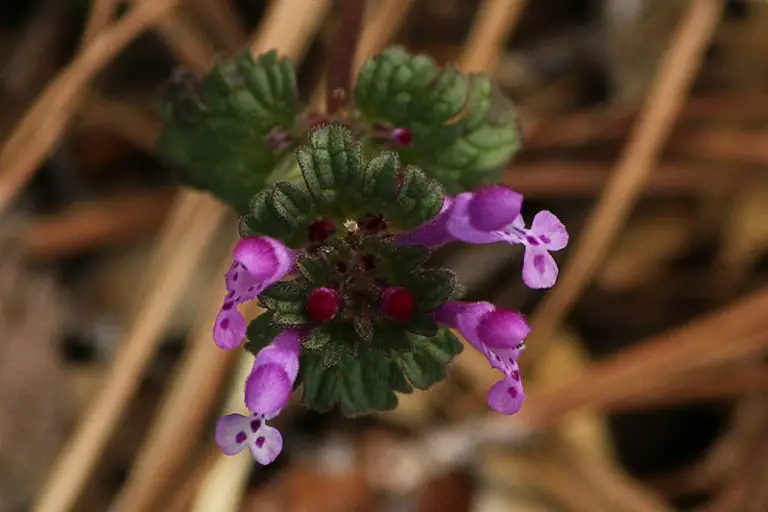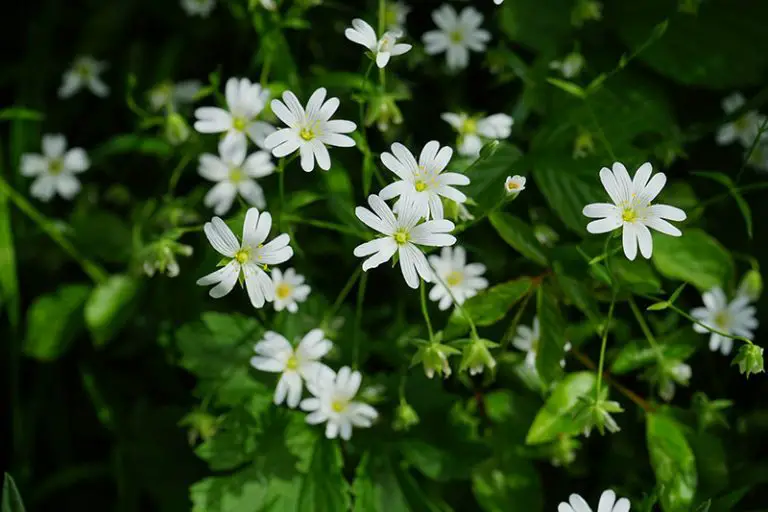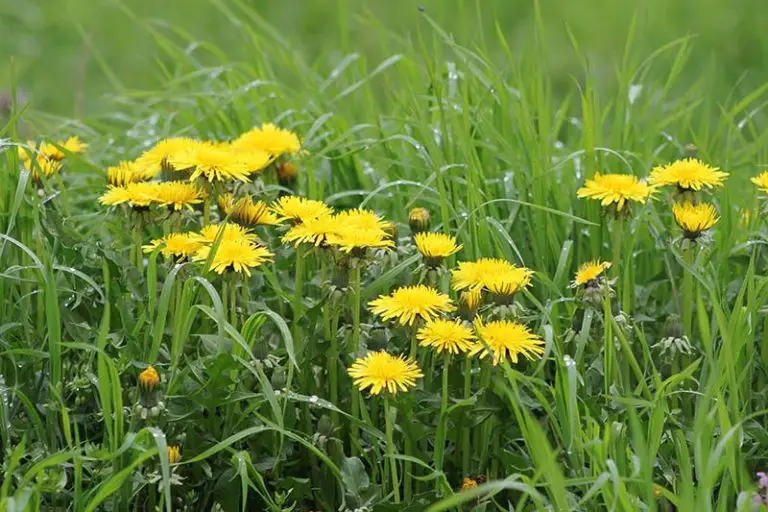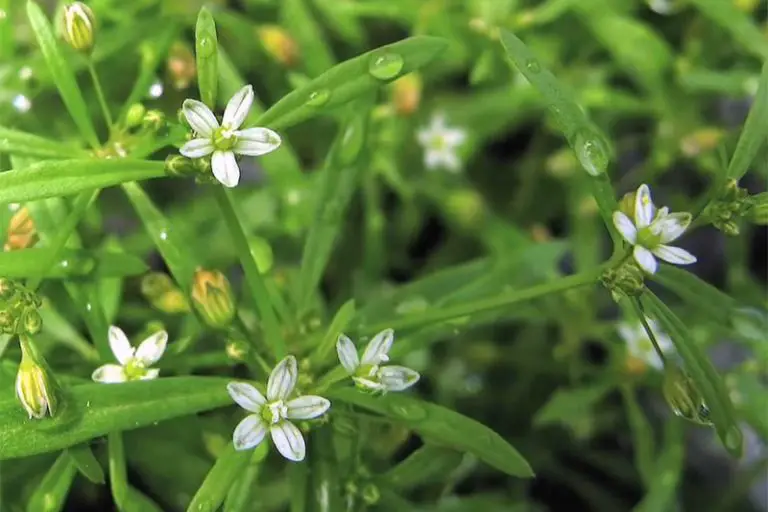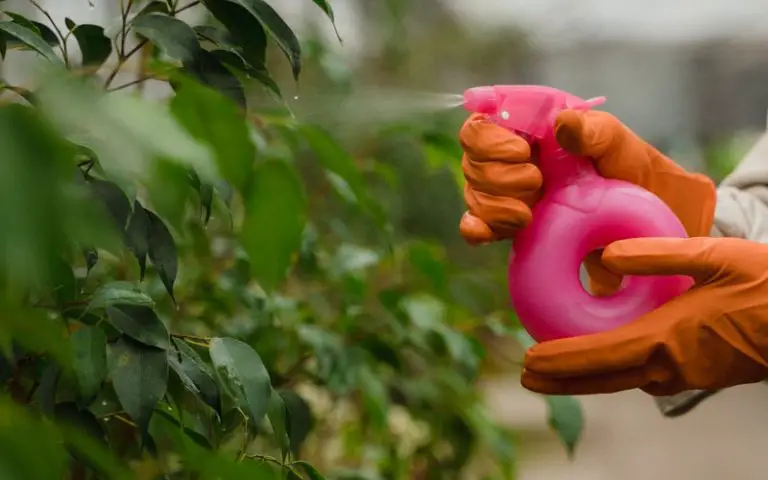Best Crabgrass Killers
Crabgrass can easily become a nuisance if not brought under control. This weed can damage lawns and other healthy plants as it grows and tangles. Simply removing it from the lawn may be ineffective in some cases.
In order to stop it in its tracks, solutions specifically made for killing crabgrass are available to purchase. It’s important to kill crabgrass before it begins to take over its surroundings.
What is Crabgrass?
Crabgrass is a type of weed which may sometimes be mistaken for regular garden grass. This is due to its appearance, which resembles an uneven clump of long grass. As a result, it sticks out terribly in any garden setting. Crabgrass poses no real danger to a lawn or garden plants, but its unsightly appearance can be distracting. It also grows and spreads quickly too, which can lead to many areas of the lawn becoming overgrown with it and leading to more removals to be done.
Crabgrass is especially garish after times of drought or frost, as it is more likely to suffer effects of extreme weather than regular lawn grass. This means that it can easily brown and turn a rusty color during times of harsh weather, leading it to stand out more against luscious green grass.
How to Kill Crabgrass
Once crabgrass has been identified, it should be killed regardless of the growing stage that it’s at. Crabgrass can quickly spread, meaning that it is important to kill it as soon as possible to have the best chance of removing it quickly.
As crabgrass typically makes its home in and amongst the lawn, it is important to use a method that will not kill surrounding healthy grass.
Killing crabgrass is a simple process, providing the methods and materials used to eliminate it are adequate. Once it has been identified, steps can be taken to remove it. Various products are available to help tackle and kill crabgrass, or prevent it from germinating to begin with. These products are all herbicides, and are used specifically to kill unwanted plants and weeds. There are numerous ways in which they can be applied, through granular or liquid formats, and they are best used at certain times of year for the most impactful results. These crabgrass killers are often applied to the areas that crabgrass grow, or usually grows, to ensure that it is kept at bay.
Table could not be displayed.5 Best Crabgrass Killers
Some weed killers are much more competent than others. In this case, these top 5 products are ideal for killing crabgrass at any stage of its development, and ensuring your lawn can remain healthy and robust.
#1 Green Gobbler Weed & Grass Killer
No products found.
Green Gobbler Weed & Grass Killer is the ideal solution for if you are ready to start anew. Sometimes grass can become tired, old and coarse, and a total overhaul may be easier and more beneficial than attempting to revive it. Green Gobbler Weed & Grass Killer is perfect for a situation like this, as it kills both the weeds and grass that it is presented with, allowing you to start from fresh.
Whilst one of the strongest solutions around, Green Gobbler Weed & Grass Killer can also be used as a spot-treatment for specific areas that need added attention. Directing the solution onto one area of grass will see it successfully dismantled, allowing for new grass seed to be easily replanted.
A versatile solution, Green Gobbler Weed & Grass Killer can be used on driveways, pavements and planter beds to remove weeds and unwanted plants. Its safe and inorganic material-free formula allows for confidence when applying it to your garden.
Green Gobbler uses similar formulas that you might use yourself when creating homemade weed killers, but much more stronger and potent. It’s important to use adequate protective gear when handing it, as the solution can cause irritation if exposed to skin. Green Gobbler utilizes a spray nozzle attachment to ensure that it can be used as a spot treatment and carried around the yard without potential damage to healthy plants. We found that, when using Green Gobbler, weeds were dying at an incredibly fast rate, and can be pulled with complete ease the next day if left. Whilst potent, fast, and effective, Green Gobbler is best used in gardens that have a lot of weeds or need a total overhaul.
#2 Spectracide HG-95703
No products found.
Spectracide may not be a big-name brand on the market, but it’s competent and able to do its job well. Able to kill up to 450 different types of weeds, Spectracide HG-95703 is easy to use, is available in various quantities and is much more affordable than similar products.
Spectracide is applied via a garden hose, meaning that its spray length can reach longer lengths than some other manual spraying methods. As it is not the strongest weed killer out there, it is also able to be used with some confidence on healthy grass, even if it needs several spot-applications to successfully kill weeds.
Spectracide is a competent crabgrass killer that is used post-emergently. We found that there were several applications that were needed to be made of the product to see clear results, and that the best results came when used in times of medium-to-high heat. Spectracide is particularly tentative when it comes to handling regular lawn grass, as it has the potential to kill off some common types of lawn such as St Augustine, if applied in warm or hot climates. It is particularly effective against crabgrass, but may require some more time and additional applications for it to truly shine.
# 3 Scotts Halts Crabgrass & Grassy Weed Preventer
No products found.
Scotts Halts Crabgrass & Grassy Weed Preventer is designed specifically for crabgrass and grass-like weed prevention. As opposed to a weed killer, this product is used for the prevention of weed growth and is best used around the same time in which overseeding or lawn fertilization tasks are completed. Whilst it has herbicidal properties, Scotts Halts Crabgrass & Grassy Weed Preventer is the best way of preventing crabgrass growth before it has even planted itself. However, Scotts Halts Crabgrass & Grassy Weed Preventer needs to be used at just the right time of year to ensure that its coverage is at its best.
Pre-emergent weed killers are just as effective as post-emergent ones, even if you’re unable to tell how many weeds had been successfully stopped in their tracks. We used Scotts Halts Crabgrass & Grassy Weed Preventer in common problem areas in our garden, only to find that it diminished the amount of weeds that we usually find there. This formula is designed with crabgrass in mind, and trailers its ingredients to accommodate it. One bottle of Scotts Halts Crabgrass & Grassy Weed Preventer can last approximately two years providing it is used correctly and sparingly. As a granular formula, Scotts Halts Crabgrass & Grassy Weed Preventer may need to be applied using a spreader or other similar mechanism to ensure spread is even.
#4 Compare-N-Save 75324 Herbicide
No products found.
Compare-N-Save 75324 Herbicide is a useful herbicide to keep around, as it is an all-purpose weed killer and competent when it comes to the job of removing weeds.
Compare-N-Save 75324 Herbicide can also be used as a preventative measure, to ensure that crabgrass or other weeds develop in the areas which it has been applied. As a result, it’s best used at certain times of the year, usually during late spring or early summer, when the soil is more likely to retain its compound and when weed seedlings are beginning to take hold in the garden.
Compare-N-Save 75324 Herbicide is a ready-to-use compound that can even be used safely around vegetables if instructions are properly followed. We found that Compare-N-Save 75324 Herbicide is particularly potent after several applications, and has the capability of killing regular lawn grass, so it should be used with caution when applying around healthy plants. This product is best used around boundaries or on driveways or walkways where weeds may be hiding.
#5 Preen 264107 Preventer
No products found.
Prevention is sometimes considered the best solution. If your garden is regularly overrun by crabgrass and are tired of removing it, apply a preventative measure after removing the last batch of crabgrass. Preen 264107 Preventer is ideal for this job, as it can stop pesky weed growth before it begins to occur.
Preen is another pre-emergent weed killer that is applied in mid spring or fall to reduce the chances of weeds growing and developing in a garden or lawn. It should be used fairly sparingly, as we found that it is fully capable of killing live and healthy plants, but generally speaking, it is unlikely to do this if applied at the right time of year and in the correct heat. We also found that for stubborn weeds, several applications were needed. Dandelions were the most stubborn of these weeds, but crabgrass seemed to fail to germinate and grow as a result of Preen’s application.
Identifying Crabgrass
Crabgrass can be easily identified, due to its appearance. It’s important to be able to recognize crabgrass at different stages of growth so that it can be removed appropriately. Of course, knowing what it looks like as a seedling provides you with a greater advantage, as removing the troublesome weed earlier is much more effective.
Identifying Crabgrass as a Seedling
Crabgrass is a fast grower, and can develop quickly if given the time to. Knowing what to look for when seeking it out can help stop it in its early stages and make removal methods more effective.
As a seedling, crabgrass will grow in a star-shaped pattern. This is unlike similar looking plants which are often welcome in our gardens, such as lawn grass or other small plants. It often grows in bare spots within the lawn, so make sure to monitor areas such as this closely.
Crabgrass seedlings may resemble a small corn plant, with very thick leaf blades. These leaf blades can range in thickness from ¼” or more, depending on how long the seedling has been growing. This will set the crabgrass apart from regular grass, as regular grass typically have a very thin and fragile blade when they sprout.
Crabgrass seedlings will also develop side shoots, which will grow quickly and help in maintaining the star-shaped pattern that the weed has.
Identifying Fully-Grown Crabgrass
Crabgrass sprawls out, hence the name. It maintains the star-like shape that it develops into as a seedling, and aims to cover as much space as possible using its offshoots. It also gathers height, as it puts up shoots from the center of the plant which will grow above regular lawn grass if left untouched. Crabgrass, if left to grow, will eventually grow into a large clump consisting of layers of thick, matted weeds.
Crabgrass is fairly easy to identify due to its shape and the thickness of the blades which it possesses.
Identifying Crabgrass in a Lawn
Crabgrass can hide successfully within a fully-established lawn. It can be particularly hard to spot if your lawn is regularly mowed and maintained, as one of crabgrass’ identifying features is that of the height it can reach if left unmowed. One of the main signs of crabgrass growing is that its leaf blades are much thicker than that of regular grass, have a fold line down the middle, and are much more matted in appearance.
It should also be noted that crabgrass grows faster than regular lawn grass, meaning that if you find a small area of lawn growing faster than the rest, it may be worth inspecting to see if there is crabgrass present in that area. Unmowed crabgrass will eventually grow into a large clump.
Why Should I Remove Weeds?
Garden weeds bring many different disadvantages to your garden if they are allowed to become established. Whilst crabgrass may be generally harmless and pose little threat to your garden, it does affect the garden’s appearance and can open the door for more invasive and damaging weeds to become established too.
Weeds are often a sign of weak, diseased or dying grass – which leave areas of the lawn susceptible for unwanted guests such as weeds or fungus.
Weeds can also prove to be an issue for animals, as certain weeds can be poisonous or otherwise dangerous to wildlife and family pets, including dogs and cats. Plenty of common weeds can prove to be poisonous to dogs, leading to illness or, even more severely, death.
Weeds should be killed at the root, preventing them from regrowing. They are versatile, robust, and can often grow in environments that other plants may struggle to grow in. As a result, it’s important that they are killed and removed fully to prevent regrowth.
How to Apply Crabgrass Killer
Crabgrass killer can be applied in a variety of different ways, depending on the solution and the packaging. Crabgrass killer can be created as a granular formula, or can be applied as a liquid. Granular formulas are usually spread using a spreader or scooper, and can be much easier to use when conducting a spot-treatment. Whilst being able to be used in spot treatments, granular solutions are harder to spread evenly and consistently without the use of a spreader, which can oftentimes be fairly expensive to buy or rent.
Liquid crabgrass killers are much more common on the market, and there are several different ways in which they can be applied. Sometimes the bottles themselves are equipped with a nozzle, for spraying across and around the garden. These are ideal for spot treatments, as a small area is affected with each application. These are often the way in which smaller bottles of crabgrass killer are applied. The alternative is a hose attachment, which allows a regular garden hose to attach to the bottle of crabgrass killer and be sprayed across the lawn. This isn’t often used for spot treatments and offers much larger range than that of a spray bottle. In addition to this, larger, more expensive, bottles of weed killer utilize the hose application method, as it would be redundant to use a hose to spray a small-size bottle of lawn fertilizer.
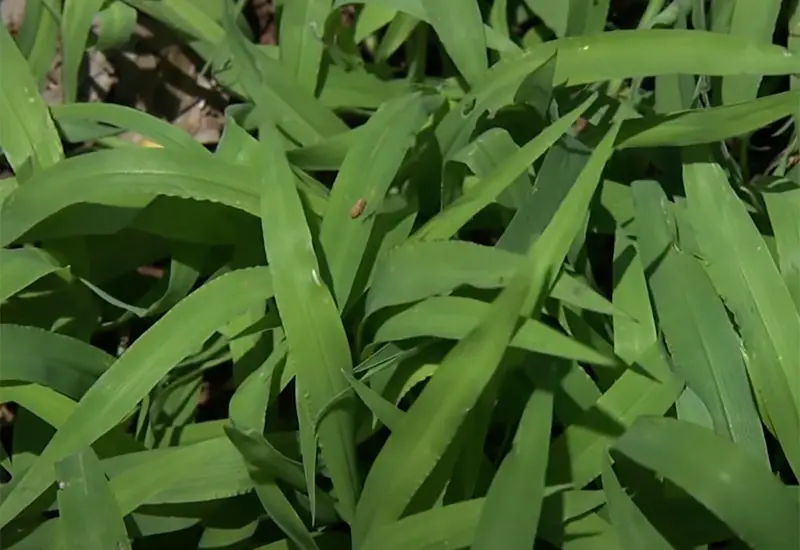
When to Apply Crabgrass Killer
Weed killers each have their own application times and instructions. Make sure to read the bottle or bag carefully before application, to make the most out of your product. Generally speaking, weed killer is best applied when the weather is mild and dry. Dry weather prevents the solution from being diluted as it is absorbed by the weed’s roots. People often choose to apply weed killer around the same time that they choose to fertilize their gardens. Weed and feed is commonly applied around this time, and is no different from applying weed killer. Lawn fertilization is often completed in spring or fall, as it is when the weather is mildest and unlikely to disrupt the process. Mid-to-late spring is ideal for weed killer applications as it will be more likely to catch weeds before they begin to grow. This is why most pre-emergent weed killers advise their product to be used in spring, as it should disrupt weeds before they even begin to grow and become bothersome.
When and how to apply weed killer depends partially on the weed that you are trying to kill. Crabgrass, for instance, is quite a nuisance to remove but is best done using pre-emergent techniques to stop it before it grows. These pre-emergent mixtures are often applied during times of dry and warm weather, before weeds begin to grow. As crabgrass is a grass-like weed, it is often best tackled by using weed killers that are capable of destroying grass too.
Types of Weed Killer
Like weeds, there are different types of weed killer that do similar jobs but using different means.
Pre-emergent weed killer – Prevents weeds from developing and germinating. It’s best applied in the springtime before any weeds have begun to grow.
Post-emergent weed killer- Is used to remove weeds that are already established and thriving in the lawn. This weed killer is easier to find in shops and there are more varieties available than pre-emergent weed killers.
Non-selective herbicide- Non-selective herbicide will kill, or attempt to kill, any plant it comes into contact with. It’s ideal for those who want to start over or demolish their lawns, or have so many weeds infesting their property that it’s easier to remove everything and start afresh. These herbicides also see a lot of success in areas that don’t sustain other plantlife and are simply overrun by weeds, such as sidewalks and driveways.
Selective herbicide- Selective herbicides are much gentler and are designed to kill a specific type of weed or group of weeds. These herbicides may require several applications to work effectively, but they are much easier on the lawn. They shouldn’t damage the grass surrounding the weed beyond salvation, and are best used in gardens that only have a slight weed problem.
Things to Consider
There are several things to consider when investing in any weed killer, regardless of the weed that you intend on tackling.
Price
The price of the weed killer you use can be an indication of its effectiveness, or simply be a symptom of paying for a named brand. Always read reviews from customers before purchasing a product, to ensure you’re getting your money’s worth.
Size
Weed killers come in different sized packaging and can last a very long time if left unused. Some people may prefer to buy a small bottle and apply for spot treatment every so often, whilst others choose to purchase a large supply- either due to the frequent use it will see or the money saved when buying in bulk.
Ingredients
Herbicides have the capability of containing either manmade or natural elements. Of course, not all herbicides containing manmade materials are bad or dangerous, but some people choose to opt for all-natural solutions to their gardening woes. Some herbicides should not be used around edible materials due to its ingredients, or should not be used in gardens that pets and animals often frequent. It’s important to consider these variables and read the packaging carefully when purchasing weed killer, as it can have a negative effect if the warnings are ignored.
Types of Weeds
The type of weeds you’ll be using your herbicide to kill or prevent should play a part in deciding which solution is best for you. Whilst some claim to be all-purpose, other brands focus specifically on one type of weed. Whilst crabgrass is a fairly common weed to deal with, not all herbicides may be effective against it.
Final Thoughts
Crabgrass may not be the most damaging weed to find in your garden, but it can be both unsightly and bothersome if allowed to grow beyond a seedling. Knowing how to identify it correctly and deal with it using specialist weed killers is an ideal way of keeping your garden looking fresh, well maintained and healthy.

